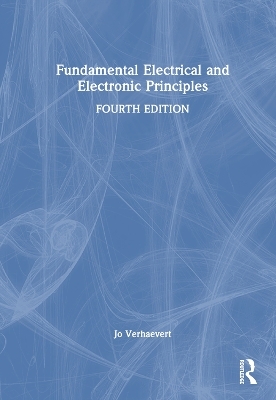
Fundamental Electrical and Electronic Principles
Seiten
2024
|
4th edition
Routledge (Verlag)
978-1-032-31148-7 (ISBN)
Routledge (Verlag)
978-1-032-31148-7 (ISBN)
Covering the essential principles for courses to state-of-the-art technology, this edition has more focus on electronic principles, balanced with electrical principles. Fuller coverage is given to active electronics, now with diodes and transistors, with worked examples, Q&As, and detailed practical assignments.
Fundamental Electrical and Electronic Principles covers the essential principles that form the foundations for electrical and electronic engineering courses. This new edition is extensively updated with a greater focus on electronic principles, evenly balanced with electrical principles. Fuller coverage is given to active electronics, with the additional topics of diodes and transistors, and core topics such as oscilloscopes now reflect state-of-the-art technology.
Each main chapter starts with learning outcomes tied to the syllabus. All theory is explained in detail and backed up with numerous worked examples and handy summaries of equations. Students can test their understanding with end-of-chapter assignment questions for which answers are provided. The book also provides detailed suggested practical assignments outlining apparatus and methods.
The book forms an excellent core work for beginning further education students with some mathematics background preparing for careers as technicians, and an introductory text for first-year undergraduate students in all engineering disciplines.
Fundamental Electrical and Electronic Principles covers the essential principles that form the foundations for electrical and electronic engineering courses. This new edition is extensively updated with a greater focus on electronic principles, evenly balanced with electrical principles. Fuller coverage is given to active electronics, with the additional topics of diodes and transistors, and core topics such as oscilloscopes now reflect state-of-the-art technology.
Each main chapter starts with learning outcomes tied to the syllabus. All theory is explained in detail and backed up with numerous worked examples and handy summaries of equations. Students can test their understanding with end-of-chapter assignment questions for which answers are provided. The book also provides detailed suggested practical assignments outlining apparatus and methods.
The book forms an excellent core work for beginning further education students with some mathematics background preparing for careers as technicians, and an introductory text for first-year undergraduate students in all engineering disciplines.
Jo Verhaevert is an associate professor and programme leader of the Electronic Engineering curriculum at Ghent University in Belgium, and a senior researcher in Electromagnetics at IMEC, Belgium.
1. Fundamentals. 2. D.C. Circuits. 3. Electric Fields and Capacitors. 4. Magnetic Fields and Circuits. 5. Electromagnetism. 6. Semiconductor Theory and Diodes. 7. Transistors. 8. Alternating Quantities. 9. D.C. Machines. 10. D.C. Transients.
| Erscheinungsdatum | 23.01.2024 |
|---|---|
| Zusatzinfo | 12 Tables, black and white; 245 Line drawings, black and white; 245 Illustrations, black and white |
| Verlagsort | London |
| Sprache | englisch |
| Maße | 178 x 254 mm |
| Gewicht | 662 g |
| Themenwelt | Technik ► Elektrotechnik / Energietechnik |
| Technik ► Nachrichtentechnik | |
| Technik ► Umwelttechnik / Biotechnologie | |
| ISBN-10 | 1-032-31148-7 / 1032311487 |
| ISBN-13 | 978-1-032-31148-7 / 9781032311487 |
| Zustand | Neuware |
| Haben Sie eine Frage zum Produkt? |
Mehr entdecken
aus dem Bereich
aus dem Bereich
Technologie – Berechnung – Klimaschutz
Buch | Hardcover (2023)
Hanser (Verlag)
39,99 €


